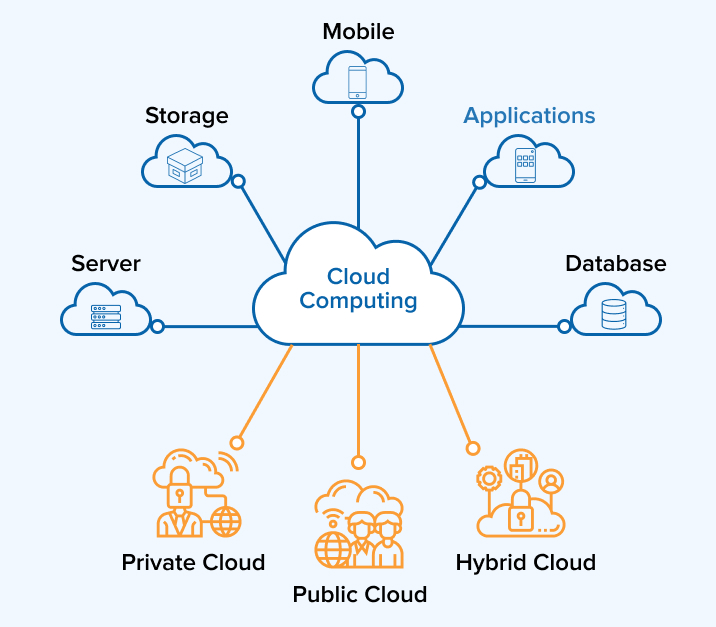Boost Your Service with LinkDaddy Cloud Services: Releasing Universal Cloud Service Potential
Boost Your Service with LinkDaddy Cloud Services: Releasing Universal Cloud Service Potential
Blog Article
Simplify Your Infrastructure With Cloud Services
As businesses navigate the ever-evolving landscape of innovation and data administration, the duty of cloud services in simplifying facilities has come to be increasingly noticeable. How can companies effectively browse this transition and absolutely unlock the potential of cloud solutions for streamlining their framework?
Benefits of Cloud Services
Cloud services offer a streamlined approach to handling IT facilities, giving services with flexibility, scalability, and cost-efficiency. One of the crucial benefits of cloud services is the scalability they offer. Services can easily scale their sources up or down based upon need, guaranteeing they just pay for what they use. This adaptability is particularly useful for companies with fluctuating demands or those experiencing development.
Additionally, cloud solutions remove the demand for services to purchase pricey software and hardware. This cost-efficiency is a substantial benefit, specifically for little to medium-sized ventures seeking to minimize in advance costs. By utilizing cloud services, services can access high-grade IT sources without the significant price connected with traditional framework setups.
Moreover, cloud solutions give companies with the versatility to access their data and applications from anywhere with an internet link. This level of ease of access enhances collaboration among teams, enables remote job, and enhances general performance. The adaptability supplied by cloud services empowers services to adapt quickly to transforming market conditions and customer needs.
Price Cost Savings and Scalability
In enhancement to the operational advantages highlighted previously, the combination of cloud services into a company's facilities brings forth substantial price financial savings and enhanced scalability. Cloud services use a pay-as-you-go model, enabling businesses to range sources up or down based upon current demands, thereby staying clear of the prices related to keeping excess capacity. This versatility allows business to adjust promptly to changing demands without incurring unnecessary expenses.
Additionally, cloud services remove the need for ahead of time investments in equipment and software, minimizing capital investment. Operating costs are likewise reduced as business no more require to handle and keep physical servers, resulting in lower energy consumption and IT staffing prices. Furthermore, cloud solutions provide automated updates and upkeep, ensuring that the framework continues to be safe and secure and current without needing hands-on treatments.
Boosted Security Measures
Carrying out rigid safety and security measures is critical when incorporating cloud solutions into a company's facilities to secure sensitive data and make certain compliance with industry laws. Cloud solution suppliers supply improved safety and security features such as data file encryption, firewall program security, and multi-factor authentication to alleviate cybersecurity threats.
Additionally, regular safety audits and conformity analyses aid make sure and determine susceptabilities adherence to market requirements. Companies can likewise benefit from attributes like automatic protection updates and real-time risk tracking supplied by cloud provider. By focusing on protection procedures and staying aggressive in addressing potential dangers, companies can with confidence utilize cloud solutions while protecting their useful data from unauthorized gain access to or violations.
Transitioning to Cloud Framework
To successfully integrate cloud services right into a company's facilities, a structured strategy that deals with the shift towards cloud-based services is essential. Transitioning to shadow framework includes cautious planning and implementation to make certain a smooth movement procedure. The initial step is to assess the current infrastructure and identify which applications and systems are suitable for movement continue reading this to the cloud. This examination must consider factors such as data sensitivity, compliance demands, and efficiency demands.
Once the evaluation is full, a movement technique need to be established. This technique must lay out the timeline, sources, and duties for moving each component to the cloud. It is important to connect this strategy clearly to all stakeholders to make certain positioning and lessen disturbances throughout the transition.
Throughout the migration monitoring, process and testing are crucial to recognize and deal with any type of issues immediately. Regular checkpoints ought to be established to track progression and make needed modifications. In addition, training for employees on Related Site using cloud solutions should be offered to make sure a successful shift and make the most of the advantages of the new infrastructure.
Best Practices for Cloud Adoption
Successful adoption of cloud services pivots on the calculated placement of organization objectives with technical capacities and business preparedness. To guarantee a smooth shift to the cloud, organizations must start by performing a comprehensive analysis of their present facilities and recognizing which work are best matched for cloud migration. It is vital to entail crucial stakeholders from different divisions in the decision-making procedure to acquire buy-in and deal with any concerns beforehand.
An additional best practice for cloud fostering is to prioritize security and conformity. Organizations should carefully evaluate the protection measures offered by cloud provider and guarantee that their information is secured according to sector standards and regulatory needs. Executing durable data encryption, access controls, and routine protection audits can assist mitigate dangers connected with cloud adoption.

Conclusion

As organizations browse the ever-evolving landscape of modern technology and information monitoring, the function of cloud services in simplifying infrastructure has become increasingly popular - linkdaddy cloud services. Exactly how can services successfully navigate this shift and truly open the capacity of cloud solutions for simplifying their infrastructure?
Cloud services supply a structured strategy to managing IT infrastructure, offering companies with scalability, versatility, and cost-efficiency. By using cloud services, organizations can access high-quality IT sources without the large price tag connected with typical facilities configurations.
To make sure a smooth transition to the cloud, companies ought to begin by performing a detailed evaluation of their existing framework and identifying which workloads are best matched for cloud migration.
Report this page